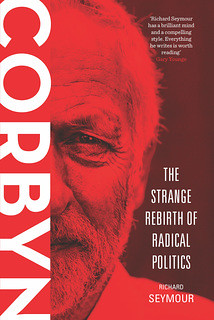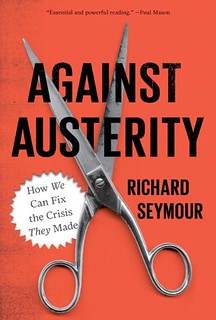Sunday, August 10, 2014
A New Generation #Gaza is born in the streets of France posted by Richard Seymour
This is a translation of an analysis of the recent Gaza protests in Le Monde. Thanks to Stephen Hastings-King for the translation.A New Generation #Gaza is born in the streets of France
LE MONDE | 26.07.2014 à 10h22 • Mis à jour le 28.07.2014 à 13h35 | Par Ariane Chemin et Faïza Zerouala
They wear their keffieh on their shoulders or wrap it around their waists like a beach wrap or an Oriental dancer’s veil. They wrap them around their faces, copying the men of the desert—or, depending on your viewpoint, hooligans. They wear them “like a sheikh” (In French “comme un cheikh”, pronounced “shirr”) or “Bedouin style” one calls it while another prefers “Arafat mode.” The girls wear hijab or accessorize with a “BB” turban in a style from the 1960s along with pretty make-up. One woman even dared a triple superimposition: first, a black headband, of the type traditionally worn around the hair before donning a veil: second, a red scarf and, third, another of green. These are the Palestinian colors, “the colors of resistance” said protestor Azadine Chetouani.
Sunday the 13th, Wednesday the 16th, Saturday the 19th and, finally, Wednesday July 23: in four demonstrations a new generation went out into the streets. The Israeli offensive in the Gaza strip, which to date has killed over 800 people, and which, on July 16, massacred four children of the same family on a beach, prompted thousands of young people out onto the streets. “We are all children of Gaza” they chanted, clapping with their hands held over their heads, before repeating, endlessly “We are all children of Gaza,” their arms extended forward in the manner of football supporters whose PSG jerseys are sponsored by Qatar as are the three comic strips based on their games. Barely a month ago, for the round of sixteen match between Algeria and Germany, they were done up in war paint, their faces green, red and white. Black as since replaced the white.
Between the old pro-Palestinian militants of the “red” Left, who have worn sandals on the tar since the 70s and broadcast their voices through megaphones, and the young “ultra” wreckers who, Saturdays and Sundays, try to poison the ends of corteges with their anti-Semitic slogans, burning Israeli flags and mime Dieudonné’s quenelle, a new style of protestors have appeared. While their elders watched for the dates of pro-Palestinian actions in the pages of L’Huma, they hop on the RER when a Twitter contact posts a photo of a child killed by a shell, a piece of news or a slogan. Their banners are hastags: #ManifGaza, #FreeGaza, #HelpGaza and others besides.
“BOHO-MUSLIMS”
Sometimes they arrive at the demo wearing shoes and city costimes, the uniform worn in the office they’ve just fled, often without saying anything to their colleagues. For the first time—or nearly—young people who are not accustomed to demos and who hold themselves at a distance from the political parties, young people who vote, work and observe Ramadan at the beginning of the summer are taking to the streets.
Samir is 35. He wears the white fitted shirt preferred by the young traders that you see smoking cigarettes at the feet of the towers at Le Défense. He never imagined that one day he would protest. Intimidated, he brought two comrades with him, total strangers to the Israeli-Palestinian conflict, but who work in the same construction company offices. “I came in order to not be non-chalant” Samir says. He has not yet worn a keffieh on his shoulders. “Too ostentatious,” he says. He is one of the last. Everyone else wears a keffieh. Their first.
The checkered scarf has becoming a rallying sign among these first-time protestor born in the 80s and 90s. These “boho-Muslims,” who explain that they are really “French” even though no-one asks them, never say what North African country their parents come from and do not wear their religion on their sleeves. Nonetheless, over the past few days they’ve been using every available means to get hold of one of these scarves that Yasser Arafat—this Mandela who rocked their youth—used to wear on his head on television when they were kids. “The keffieh is resistance. It’s a political thing.” These thirty-somethings say in chorus in order to convince themselves that there is nothing religious in this cloth square with the Argyle weave in red and white, black and white. None of these protestors have ever set foot in Gaza. In general, the checkered scarf has never been in either their wardrobes or their drawers. These days, they’ve been looking among family members to find one who might have brought one back from Haajj along with a djellabah or a bottle of Zamzam water. “My keffieh? I took it out of the plastic yesterday.”
“I wear the keffieh that my grandparents brought back from Mecca in 1996” Wassila told us on Wednesday July 23. She has just passed the bac at Montigny-lès-Cormeilles in le Val-d'Oise. “It’s the same age I am.” Slim Saihi, 37, who works for the insurance company Groupama, came to the protest with his wife. “My keffieh? I took it out of the plastic yesterday. I bought it in Bourget at the salon of the UOIF. It is the color of my heart.”
At Clignancourt, among the mail-order shops, the vendors with keffieh were sold out in a few days. Along the route followed by the demos, you can get one for 5 euro. Some people, like Lakhdar, a railroad worker of 40, still don’t quite know what to call this “scarf.” One also senses from the slightly gauche manner in which they throw it over their shoulders that they are not yet entirely at ease with this new accessory. Mohammed Bennouiouia, 34 and the father of a family, just got one. “I bought it at the last demo. It’s the first one. I hope that the bombardments will stop and that I won’t need this keffieh when I go out on Saturdays any more. But I don’t have much hope.” He would prefer to keep it at home among the other souvenirs of his infrequent militant actions.
There aren’t many snapshots of this political mish-mash of a new generation. They don’t have many big engagements. “I am anything but in favor of demos” says Arafa, 33. She is a site manager. “I have only gone into the streets one, in 2002, against the Front National” after the defeat of Lionel Jospin in the first round of the presidential election. For others, the first militant shock dates from 2008. It was between Christmas and New Year’s, during the Israeli operation “Cast Lead” carried out against Gaza by the IDF. In 2013, many also protested against marriage equality, wearing stickers on their chests “A Daddy + A Mommy” in the same places where now, this summer, they wear their new keffiehs. “Reference points are important.”
JACQUES CHIRAC IN JERUSALEM IN A FACEBOOK LOOP.
YouTube, that infallible archivist who never sleeps, has come to refresh their memories and to add to those memories some otherwise forgotten little comedies. One cult scene, from Jacques Chirac’s October 1996 trip to East Jerusalem, plays in a loop on Facebook. Annoyed in the old city by an Israeli security too tight for his liking, the former president gave it to the body guards in an English as much Frenchie as approximate: “Je commence à en avoir assez. What do you want? Me to go back to my plane and go back to France? This is not a method. This is provocation.” These five phrases have achieved cult status after being resuscitated by social networks at the beginning of this July while “Operation Protective Edge” unfolds in the Middle East. On the net, comments recall that a street in Ramallah bears the name of the ex-Chief of State, the unexpected hero of the Gaza generation.
“Remember that Manuel Valls planted an olive tree in a park for peace in Palestine in 2008” recalls one of the protestors. Another video plays on the internet. It was in 2006. Valls, who was not yet head of the government and had not yet banned pro-Palestinian demonstrations in Paris, and who was still at Evry (Essone), met with Leila Shahid, who is now the ambassador for Palestine at the European Union. The “kefeih generation” has no problem with posting and sharing texts and images from these two ceremonies. We hear from a choir of thirty-somethings: “The Socialists are finished. Hollande defended Netanyahu. We will never vote for him again.” Nora Saihi, an elegant young woman of 37, swears: “We are even ready to vote for Martine Le Pen” before being overshadowed by the breaking of the fast a little before 10 PM, a fast that did not prevent them from marching in support of #Gaza with dry throats under the summer sun.










